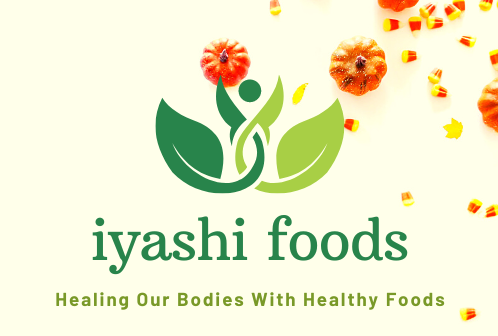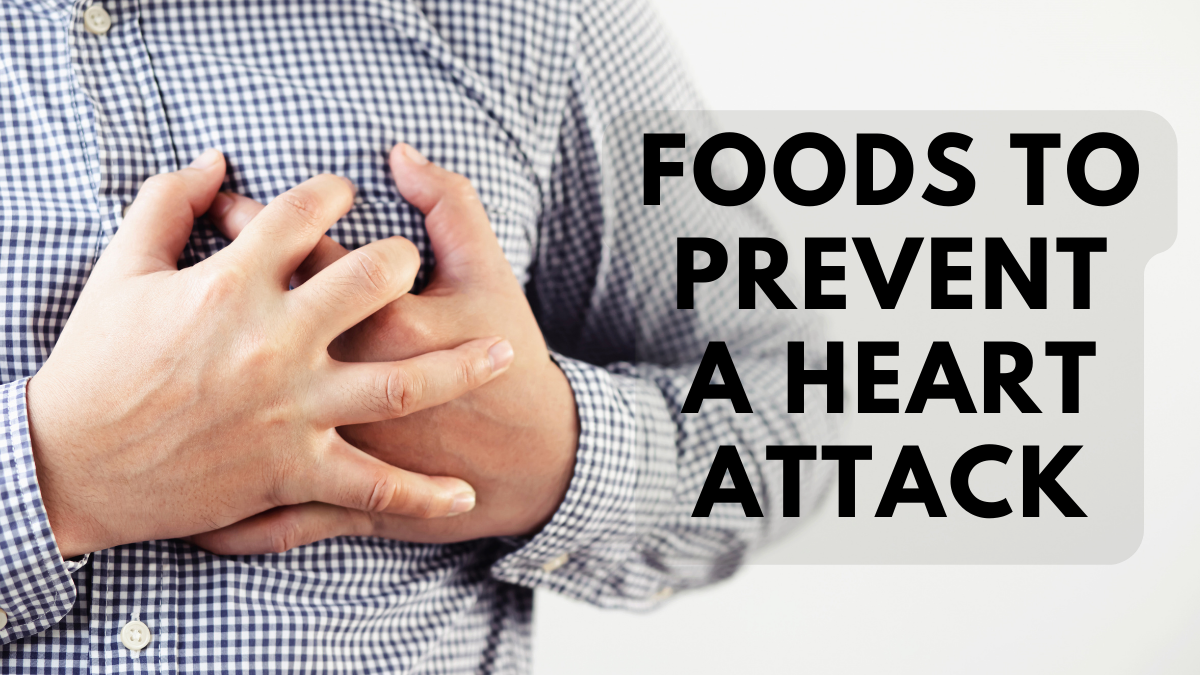The best foods to prevent a heart attack include fatty fish, nuts, berries, whole grains, leafy greens, and dark chocolate. Avoid processed and fried foods, red meat, sugary drinks, high-sodium foods, and alcohol.
What is a Heart Attack?
A heart attack is also known as a myocardial infarction. It occurs when the blood flow to a part of the heart is blocked, usually by a blood clot. This can damage or destroy a portion of the heart muscle. Leading to serious complications or even death if not treated promptly.
Heart Attack Signs and Symptoms
The signs and symptoms of a heart attack can vary from person to person. Not everyone will experience the same symptoms. However, some common symptoms and signs include:
- Chest pain or discomfort is the most common symptom of a heart attack. The pain may feel like pressure, squeezing, fullness, or aching. It may be located in the center of the chest or spread to the arms, neck, jaw, back, or stomach. The pain may last for a few minutes or come and go.
- Shortness of breath: This may occur with or without chest pain or discomfort. You may feel like you are unable to catch your breath or like you are suffocating.
- Nausea, vomiting, or indigestion: These symptoms may be mistaken for stomach problems, but they can also be a sign of a heart attack.
- Sweating: You may experience cold sweats or feel like you are breaking out in a sweat even if the room is cool.
- Fatigue: You may feel unusually tired, weak, or lightheaded even if you have not been active.
- Dizziness or lightheadedness: You may feel like you are about to faint.
- Pain or discomfort in other areas of the upper body: You may feel pain, discomfort, or pressure in the back, neck, jaw, or arms.
It is important to note that not everyone who experiences a heart attack will have all of these symptoms. Some people may not have any symptoms at all. If you or someone you know is experiencing any of these symptoms, especially chest pain or discomfort, it is important to seek medical attention immediately by calling your local emergency number.
Foods To Prevent a Heart Attack
There are many foods that can help prevent heart attacks by promoting heart health. Here are some examples:
- Fatty fish like salmon, mackerel, and tuna are rich in omega-3 fatty acids. These can help lower triglycerides, reduce inflammation, and improve heart health.
- Nuts: These include almonds, walnuts, and pistachios. They are rich in unsaturated fats, fiber, and antioxidants, which can help lower cholesterol and reduce the risk of heart disease.
- Berries such as blueberries, strawberries, and raspberries are rich in antioxidants. These can help reduce inflammation and protect against heart disease.
- Whole grains including oats, brown rice, and whole wheat are rich in fiber, which can help lower cholesterol and reduce the risk of heart disease.
- Leafy greens like spinach, kale, and collard greens are rich in vitamins, minerals, and antioxidants, which can help lower blood pressure and reduce the risk of heart disease.
- Dark chocolate is rich in flavonoids, which can help improve blood flow and lower blood pressure.
It is important to note that no single food can prevent heart attacks on its own. A healthy diet that includes a variety of nutrient-rich foods, along with regular physical activity and avoiding smoking, can help promote heart health and reduce the risk of heart attacks.
Read our related article on the best foods for your heart.

Foods That May Cause a Heart Attack
Some foods can increase the risk of heart attacks by contributing to the development of conditions like high blood pressure, high cholesterol, and diabetes. Here are some examples:
- Processed and fried foods like fast food, frozen meals, and snacks, as well as fried foods like French fries, fried chicken, and donuts, are often high in unhealthy fats, sodium, and added sugars. These can contribute to high blood pressure, high cholesterol, and weight gain.
- Red meat like beef, pork, and lamb can be high in saturated fats, which can contribute to high cholesterol and increase the risk of heart disease.
- Sugary drinks like soda, sweet tea, and sports drinks are often high in added sugars, which can contribute to weight gain, high blood pressure, and high triglycerides.
- High-sodium foods: Foods like canned soup, pickles, and processed meats are often high in sodium, which can contribute to high blood pressure and increase the risk of heart disease.
- Alcohol: Drinking too much alcohol can increase blood pressure, contribute to weight gain, and increase the risk of heart disease.
It is important to note that no single food can cause a heart attack on its own.
What Triggers a Heart Attack?
A heart attack is often caused by a blockage in one or more of the coronary arteries, which supply blood to the heart muscle. The blockage is usually the result of a buildup of plaque, which is made up of cholesterol, fat, and other substances that can accumulate on the inside of the artery walls over time. When the plaque ruptures, a blood clot can form and block the flow of blood to the heart, leading to a heart attack.
There are several factors that can increase the risk of developing plaque buildup and, ultimately, a heart attack. These risk factors include:
- Smoking can damage the lining of the arteries, increase the buildup of plaque, and increase the risk of blood clots.
- High blood pressure can damage the arteries and increase the risk of plaque buildup.
- High cholesterol: High levels of LDL cholesterol (often referred to as “bad” cholesterol) can contribute to plaque buildup.
- Diabetes can damage the arteries and increase the risk of plaque buildup.
- Family history: If you have a family history of heart disease, you may be at a higher risk of developing plaque buildup and a heart attack.
- Obesity: Being overweight or obese can increase the risk of high blood pressure, high cholesterol, and diabetes, all of which can contribute to plaque buildup.
- Sedentary lifestyle: A lack of physical activity can contribute to the development of risk factors like high blood pressure, high cholesterol, and obesity, which can increase the risk of a heart attack.
Note that while these risk factors can increase the likelihood of developing plaque buildup and a heart attack, they do not guarantee that a heart attack will occur. Make healthy lifestyle choices and manage these risk factors, to reduce the risk of developing heart disease and experiencing a heart attack.
What To Do If Someone Is Having a Heart Attack?
If you suspect someone is having a heart attack, it is important to act quickly and seek emergency medical attention. Here are the steps to take:
- Call for emergency medical help: Dial the emergency services number in your area (such as 911 in the United States) or have someone else do it for you. Tell the operator that you think someone is having a heart attack and give your location.
- Assist the person: If the person is conscious and able to speak, ask them if they are experiencing chest pain or discomfort. If they say yes, have them sit down and rest while you wait for emergency medical help to arrive. If they are not conscious or unable to speak, check their breathing and pulse and start CPR (cardiopulmonary resuscitation) if necessary.
- Administer aspirin: If the person is conscious and able to swallow, give them an aspirin tablet (325 milligrams) to chew and swallow. Aspirin can help to thin the blood and prevent further clotting.
- Monitor the person’s condition: Stay with the person and monitor their condition until emergency medical help arrives. If their condition worsens or they become unresponsive, start CPR if you are trained to do so.
It is important to act quickly. Early treatment can help to minimize damage to the heart muscle and improve the chances of survival.

How Long Does a Heart Attack Last?
The duration of a heart attack can vary from person to person and can depend on several factors. This includes the severity of the blockage, the location of the blockage, and how quickly the person receives medical treatment. Generally, it can last from a few minutes to several hours.
In some cases, a person may experience what is called a “silent” heart attack, where there are no noticeable symptoms. However, even if a person is not experiencing any symptoms, a silent heart attack can still cause damage to the heart muscle.
It is important to seek emergency medical attention as soon as possible if you suspect you or someone else is having a heart attack. Early treatment can help to minimize damage to the heart muscle and improve the chances of a full recovery.
How To Prevent a Heart Attack
There are several ways you can help prevent a heart attack:
- Quit smoking: Smoking can damage the arteries and increase the risk of plaque buildup. Quitting smoking is one of the best things you can do for your heart health.
- Eating a healthy diet that is rich in fruits, vegetables, whole grains, lean protein, and healthy fats. This can help to keep your heart healthy. Reduce your intake of processed and high-fat foods.
- Exercise regularly: Regular exercise can help to lower your blood pressure. It can also reduce your risk of developing diabetes, and improve your cholesterol levels. All these can reduce your risk of a heart attack.
- Manage stress: Chronic stress can increase the risk of heart disease. Find ways to manage stress, such as practicing relaxation techniques, getting enough sleep, and exercising regularly.
- Maintain a healthy weight: Being overweight or obese can increase the risk of high blood pressure, high cholesterol, and diabetes, all of which can contribute to a heart attack. Maintaining a healthy weight can help to reduce these risk factors.
- Control your blood pressure and cholesterol levels: High blood pressure and high cholesterol can damage the arteries and increase the risk of a heart attack. Monitor these levels and take steps to control them if they are high.
- Manage diabetes: If you have diabetes, manage your blood sugar levels and follow your treatment plan to reduce the risk of heart disease.
- Limit alcohol intake: Drinking too much alcohol can increase blood pressure, contribute to obesity, and increase the risk of heart disease. Limit your alcohol intake to no more than two drinks per day for men and one drink per day for women,
Taking these steps can help to reduce your risk of a heart attack and improve your overall heart health.
What is The Link Between Heart Attack and High Blood Pressure?
High blood pressure, also called hypertension, is a major risk factor for heart attack. When blood pressure is consistently high, it can cause damage to the walls of the arteries that supply blood to the heart. Over time, this damage can lead to the formation of plaque, which can narrow the arteries and increase the risk of a heart attack.
High blood pressure can also contribute to the formation of blood clots, which can block the flow of blood to the heart and cause a heart attack. In addition, high blood pressure can cause the heart muscle to thicken and become stiffer, which can make it more difficult for the heart to pump blood and increase the risk of a heart attack.
Lowering high blood pressure through lifestyle changes and/or medication can help to reduce the risk of a heart attack. The American Heart Association recommends that blood pressure should be less than 120/80 mm Hg for adults. Maintaining a healthy weight, eating a healthy diet, getting regular exercise, reducing salt intake, limiting alcohol intake, and managing stress can all help to lower blood pressure and reduce the risk of a heart attack.
Read our related article on the high blood pressure diet.

What Is The Difference Between a Heart Attack and a Stroke?
A stroke and a heart attack are both serious medical emergencies that can have life-threatening consequences, but they are caused by different underlying mechanisms and affect different parts of the body.
A heart attack occurs when there is a blockage in the blood vessels that supply the heart muscle with oxygen and nutrients. A heart attack is a problem with the heart itself.
A stroke, on the other hand, occurs when there is a disruption of blood flow to the brain, either due to a blockage in a blood vessel (ischemic stroke) or bleeding in the brain (hemorrhagic stroke). This can cause brain cells to die, which can lead to a wide range of symptoms, including difficulty speaking, weakness or paralysis on one side of the body, and vision problems. A stroke is a problem with the brain.
Both strokes and heart attacks require immediate medical attention. Treatment is aimed at restoring blood flow to the affected organ as quickly as possible to minimize damage and improve outcomes. The specific treatments for each condition are different, and it is important to seek medical attention as soon as possible to ensure the best possible outcome.
Read our related article on how to reduce your chances of getting a stroke
Are Cardiac Arrest and Heart Attack The Same?
No, they are not the same thing, although they are related.
A heart attack occurs when there is a blockage in the blood vessels that supply the heart with oxygen and nutrients.
Cardiac arrest, on the other hand, occurs when the heart suddenly stops beating. This can lead to a loss of consciousness and, if not treated immediately, death. Cardiac arrest can be caused by a variety of underlying conditions, including heart attack. It can also be caused by other factors such as heart disease, electrical abnormalities in the heart, trauma, drug overdose, or drowning.
While a heart attack can sometimes lead to cardiac arrest, not all heart attacks result in cardiac arrest. Cardiac arrest can occur without any prior symptoms. Prompt recognition and treatment of both heart attack and cardiac arrest are crucial for improving outcomes and saving lives.
Heart Attack In Children
Although heart attacks are more common in adults, they can occur in children as well, although they are rare. In children, heart attacks are most often caused by a condition called Kawasaki disease. This disease causes inflammation in the walls of the blood vessels and can lead to the formation of blood clots.
Other causes of heart attacks in children may include congenital heart defects or abnormalities in the coronary arteries.
Symptoms of a heart attack in children are similar to adults. These include chest pain or discomfort, shortness of breath, nausea or vomiting, dizziness or lightheadedness, or sudden loss of consciousness.
If you suspect that a child is experiencing a heart attack, it is important to seek emergency medical attention immediately. Early treatment can help to minimize damage to the heart muscle and improve the chances of a full recovery.
Heart Attack In Women
Heart attack symptoms in women can be different from those in men. Though in most cases are similar as indicated above. Some common symptoms that women may experience include:
- Chest pain or discomfort: Women may feel pressure, squeezing, fullness, or pain in the center or left side of the chest. The pain may be mild or severe and may come and go.
- Shortness of breath: Women may feel short of breath like they can’t catch their breath or like they are gasping for air.
- Fatigue: Women may feel unusually tired, weak, or lethargic, even if they have not been active.
- Nausea, vomiting, or indigestion: Women may experience nausea, vomiting, or indigestion, which can be mistaken for stomach problems.
- Pain or discomfort in other areas of the upper body: Women may feel pain, discomfort, or pressure in the back, neck, jaw, or arms.
- Sweating: Women may experience cold sweats, dizziness, or lightheadedness.
It is important to note that not all women who experience a heart attack will have these symptoms. Some women may not have any symptoms at all.
REFERENCES
Awareness of heart attack symptoms and response among adults—United States, 2008, 2014, and 2017
Sometimes (what seems to be) a heart attack is (really) a pain in the neck
Whole grain foods and heart disease risk
Avoiding heart attacks and strokes: don’t be a victim-protect yourself
Heart attack and stroke prevention in women


